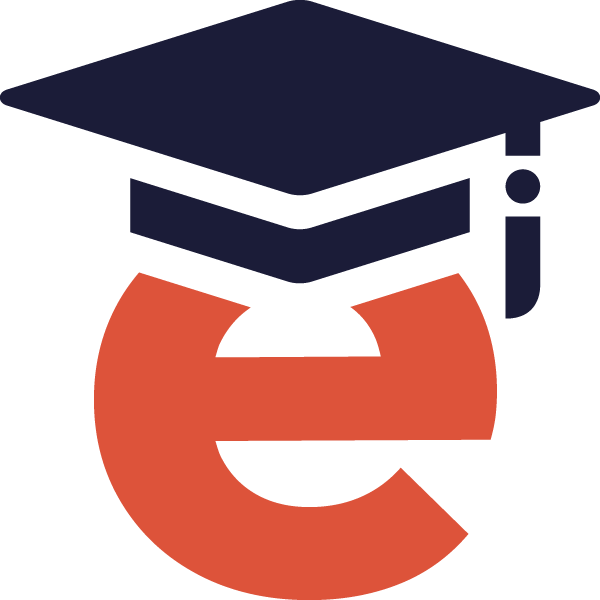A Strategic Guide for Creating Impactful Learning Content for External Stakeholders
Written by Dr. Diana Brandon
You’ve done it! Your organization is strong. You have amazing things to offer. Your team knows it, and they believe in your mission. It’s time to scale up and grow your organization outside the current scope. And you’re stuck.
Connecting outside an existing organization is essential. New markets, people, resources, and investments are the lifeblood of a growing organization. But growing is painful—they are called “growing pains” for a reason. Enter training—educating external stakeholders on what you do and how it can help them is now the key to your success. But who and how?
Whether you’re educating clients, partners, vendors, or community members, delivering clear, engaging, and accessible content can have a direct impact on your organization’s success. However, you may find it challenging to develop content that does more than just inform; it also needs to captivate your audience, be inclusive, and scale efficiently across platforms. Without the right strategy and support, meeting these goals can be difficult. In this post, you’ll explore the essential elements of designing impactful learning experiences for your external audiences and discover how partnering with content development experts like eLearningDOC can streamline the process and help you deliver results that truly resonate.
Who are External Stakeholders?
External stakeholders are individuals or groups that exist outside the organization but have a vested interest in its success. This can also describe individuals who are outside a specific department but still are part of a larger organization. This could take a lot of different forms and may look unique for each organization, but some examples include:
- Sales Teams: These individuals may be inside your organization, but they are outside your department. They need to know what it is that you do so they can effectively sell your product or service.
- Clients: They are purchasing or using your product: They need to know how to use your product or how your organization is different from the competition.
- Board Members: These individuals support strategic decisions based on the mission, vision, and values of the organization. They need to understand the challenges that your organization faces, or they may need support in how to best support your organization in the new leadership role that they hold.
- Vendors: These groups provide raw materials to the organization. Vendors may need to understand how your products or services are used so that they can better support your work.
- Community Members: These groups interact with your organization because of proximity. They may need to know who you are as an organization and how you support the community in which your organization participates.
What do They Want?
With such a diverse target audience, it’s essential to recognize that any stakeholder education and training you provide be able to meet the needs of that widely varied population.
Tailored Content
One of the primary needs of these external learners is relevance. They seek content that speaks directly to their experiences and challenges, ensuring that what they learn can be applied in meaningful ways.
Access
Flexibility is also critical—external stakeholders value learning opportunities that fit into their schedules and can be accessed anytime, anywhere. These groups won’t be able to come for in-person lectures. If they cannot access the training, then it does no good.
Quality of Design
Additionally, ease of access is paramount; if content is difficult to find or navigate, engagement will decrease. Lastly, stakeholders often evaluate the ROTI (Return on Time Invested). They want to ensure that the time they spend learning is worthwhile and beneficial.
Accessibility
Your training materials must be accessible to all potential participants. This includes creating content that is usable for individuals with disabilities and ensuring that it is available in multiple formats if possible.
Engagement and Interactivity
Training content should not just be informative but engaging as well. Utilizing multimedia, real-life scenarios, and interactive elements like quizzes can boost retention and make learning enjoyable.

How to Engage External Stakeholders
Creating an effective training program for external stakeholders can be overwhelming but breaking it down into manageable steps can simplify the process.
Step 1: Identify Audience Needs
Before you start building anything, you need a clear understanding of what it is that your audience—in this case your external stakeholders—actually want. Conduct surveys, interviews, or focus groups with representatives from each stakeholder group to gather insights about their current knowledge gaps and information needs. Caution: What one group of stakeholders finds valuable will not be the same as another, so as you explore, you should get feedback and information from all types of stakeholders, not just a single group.
Step 2: Identify Learning Objectives
Before creating any content, determine clear and measurable learning objectives that align with your organization’s goals. Utilize the SMART framework—Specific, Measurable, Achievable, Relevant, and Time-bound—to guide your objective-setting process. For example, instead of a vague goal like “improve sales knowledge,” specify, “train sales teams to effectively articulate the features and benefits of all products by the end of the quarter.” Focus on identifying what you want learners to actually do at the end of the training. Use this to guide the creation of your objectives. Consider what success looks like for this training endeavor. Ask yourself, “What should learners be able to DO at the end of this?” Then use those verbs to begin your objectives.
Caution: “Understand” doesn’t mean the same thing to everyone, so avoid using it as an objective.
Step 3: Develop Engaging Content and Delivery
After gathering information, it’s time to develop the content. This content should be organized and structured logically. Don’t confuse content with delivery. Content is the information that you want your learners to have. This is where you prioritize relevant information for each group of target learners. How you deliver that content to the learners can take many different forms (video, course, handout, job aid, lecture, etc.). You should consider delivery separately from content to ensure that you are providing flexible access. The same content may need to be provided in several different formats to reach different audiences. Technology also plays a role in how you deliver this training. If tracking is important, you may require the use of a Learning Management System (LMS) that will allow for external stakeholders to participate. Identifying how you plan to deliver the program at the beginning of the design process will prevent roadblocks and detours from impacting your timeline and budget.
Creating training for external stakeholders comes with its challenges, particularly regarding design. Strong design is not merely about aesthetics; it’s about crafting a meaningful learning experience. Ensure your content is visually appealing, easy to navigate, and well-organized to prevent overwhelming learners.
Tip: Talk to an expert about options to ensure you’re making an informed decision about both content and delivery.
Step 4: Focus on Accessibility
As you consider your training materials, be vigilant about accessibility. Ensure that your content complies with guidelines such as the Web Content Accessibility Guidelines (WCAG). This might include using alt text for images, ensuring color contrast is sufficient, and providing transcripts for video content. Failing to consider accessibility from the start creates a lot of extra work for completing a project. Failing to consider accessibility may exclude certain stakeholder groups from benefiting from the training, creating barriers that hinder engagement and effectiveness.
Tip: Designing your materials for all learners and considering additional options, such as translations or simplified language versions, allows you to target a more diverse audience. This is especially important for external stakeholder groups that you may not know well.
Step 5: Implement the Training Program
Launch your training program ensuring that all stakeholders are informed and have easy access to the materials. Provide clear instructions on how to navigate the training resources and encourage interaction, whether through Q&A sessions, discussion boards, or follow-up webinars.
Step 6: Keep it Going
After implementing the training, gather feedback from participants. This could be in the form of surveys, assessments, or informal discussions. Evaluate the effectiveness of the training against the established objectives and make necessary improvements. Consider creating a system for ongoing training opportunities. External stakeholders should have access to updated materials and further resources as the organization evolves and new products are introduced. This not only helps in retaining knowledge but also strengthens the relationship with stakeholders.
A Case of Cold Feet
If the process of creating effective training for external stakeholders feels daunting, consider partnering with an expert. Organizations like eLearningDOC that specialize in eLearning and content development can provide the necessary tools, resources, and expertise to streamline the training design and delivery process. Collaborating with professionals ensures that your training materials are engaging, accessible, and built to meet the specific needs of your external stakeholders.








